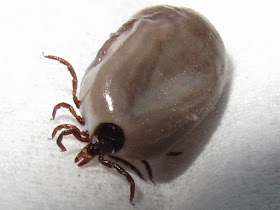Lexi made her first appearance in this blog in October of 2013 when I met her for the first time.
A Bird in the Hand

On May 31st, 2015, our son Matthew and Alexandra (Lexi) were married on a hilltop vista on our property.
Matt & Alexandra's Wedding


In September 2016 Lexi gave birth to our grandson Evan Reed (known as Reed).
Evan Reed Beebe

Lexi's first Christmas with new son Reed in December 2016. It was only a week after this joyous Christmas gathering that Lexi was diagnosed with Stage 4 Breast Cancer.
Christmas with Reed

Over the next 11 months Lexi received surgery to her neck, radiation treatment and chemo, while enjoying time with Reed and family.
Keeping Up With Mr. Reed


Throughout the year Lexi tried to maintain a positive attitude and keep family life as normal as possible.
Reed's Check-up

An art lesson for Reed on his first birthday.
Mr. Reed at One Year Old

Sadly she didn't win her battle with cancer and this wonderful person will be missed greatly by her friends and family.








































